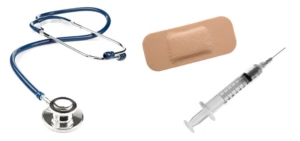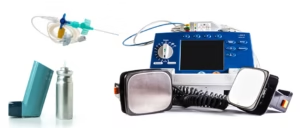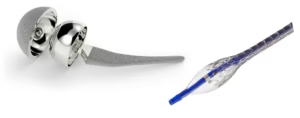Why Medical Device Classification Matters
If you’re a medical device or in vitro diagnostic (IVD) manufacturer, one of the first regulatory hurdles you’ll face is classification. This might sound like a technicality, but getting it right is crucial—it determines how much regulatory oversight your product needs, how long it will take to get to market, and what kind of data you need to gather.
Misclassification isn’t just a minor mistake—it can lead to expensive delays, rejected applications, product recalls, and even legal consequences. At GBA Key2Compliance, we help companies avoid these pitfalls by ensuring they classify their products correctly from the start. For a deeper dive into why classification is so important, check out our blog post on The Importance of Understanding Medical Device Classification.
How Medical Devices Are Classified Under MDR
Medical devices in the EU fall under the Medical Device Regulation (MDR, EU 2017/745), which groups products into four categories based on risk:
Class I: Low-Risk Devices – The “DIY” Route
If your product is non-invasive, simple, and low risk, it likely falls under Class I. Examples include bandages, wheelchairs pushed by hand, hospital beds, compression hosiery and stethoscopes. Most Class I devices can be self-certified, meaning you don’t need a Notified Body (an independent third party reviewer) to assess the conformity of your medical device’ documentation and issue a certificate before the product may be placed on the market.

However, there are exceptions:
- If your device is sterile (Class Is),
- Has a measuring function (Class Im), or
- Is reusable surgical instrument (Class Ir)
…then a Notified Body must review at the aspects that are related to those characteristics of the device.
Even for regular Class I devices, you still need to:
- Establish a Quality Management System (QMS) in line with the requirements of the MDR.
- Ensure that the device complies with applicable general safety and performance requirements (GSPR).
- Prepare Technical Documentation (Technical File) proving compliance with the MDR.
- Perform a Clinical Evaluation as part of the technical documentation.
- Draw up an EU declaration of conformity for the device and attach a CE mark to the device.
- Register your device and you as a manufacturer in EUDAMED, the European medical device database.
- Follow post-market surveillance (PMS), vigilance and market-surveillance rules, meaning you must track performance, report serious incidents and field safety corrective actions (FSCA) and act if needed.
If you skip these steps, authorities can remove your product from the market, impose fines, or even pursue legal action. To better understand how to navigate MDR requirements, check out our guide on Simplify Your Path to MDR.
Class IIa & IIb: Medium to Higher Risk
– The Notified Body Approval Zone
If your device is more complex and more of a medium to high risk device—such as an infusion pump, X-ray machine, certain dressings, or ventilator—it falls into Class IIa or IIb, meaning a Notified Body must be involved.

Manufacturers must:
- Establish a Quality Management System (QMS) in line with the requirements of the MDR.
- Ensure that the device complies with applicable general safety and performance requirements (GSPR).
- Prepare Technical Documentation (Technical File) proving compliance with the MDR.
- Perform a Clinical Evaluation as part of the technical documentation.
- Involve a notified body for conformity assessment to demonstrate whether the requirements of the MDR relating to a device has been fulfilled.
- Draw up an EU declaration of conformity for the device and attach a CE mark to the device.
- Register your device and you as a manufacturer in EUDAMED, the European medical device database.
- Follow post-market surveillance (PMS), vigilance and market-surveillance rules, meaning you must track performance, report serious incidents and field safety corrective actions (FSCA) and act if needed.
Skipping the Notified Body conformity assessment process is not an option — without it, your product cannot be legally placed on the market in EU.
Class III: High-Risk Devices
– The Most Scrutinized Category
Class III devices are strictly high-risk devices. If your device is, for example, incorporating, as an integral part, a medicinal product, is in direct contact with the heart of the central circulatory or central, nervous system, such as devices with antibiotics, pacemakers or artificial heart valves, it falls into Class III—the highest risk category. These devices undergo the strictest review process.

Manufacturers must:
- Establish a Quality Management System (QMS) in line with the requirements of the MDR.
- Ensure that the device complies with applicable general safety and performance requirements (GSPR).
- Prepare Technical Documentation (Technical File) proving compliance with the MDR.
- Perform a Clinical Evaluation as part of the technical documentation. For class III and implantable devices this generally also includes performing a premarket clinical investigation.
- Involve a notified body for conformity assessment to demonstrate whether the requirements of the MDR relating to a device has been fulfilled.
- Draw up an EU declaration of conformity for the device and attach a CE mark to the device.
- Register your device and you as a manufacturer in EUDAMED, the European medical device database.
- Follow post-market surveillance (PMS), vigilance and market-surveillance rules, meaning you must track performance, report serious incidents and field safety corrective actions (FSCA) and act if needed.
Failing to meet Class III standards can result in market bans, recalls, and potential legal action.
For a list of approved Notified Bodies, visit the European Commission’s database.
How In Vitro Diagnostic Devices (IVDs) Are Classified Under IVDR
IVD devices—such as blood tests, genetic tests, and diagnostic assays—are regulated under the In Vitro Diagnostic Regulation (IVDR, EU 2017/746).
Under previous IVDD rules, 80% of IVDs could be self-certified. But under IVDR, the majority now require Notified Body involvement, making classification even more critical.
For a more detailed look at IVDR compliance, check out our resource: IVDR Compliance Made Easy
Class A: Low-Risk – Mostly Self-Certified
General lab equipment, specimen receptacles, and instruments specifically intended for in-vitro diagnostics fall under Class A (low individual risk and low public health risk). These devices are self-certified, unless they are sterile, in which case a Notified Body must assess the sterile aspects.
Class B, C & D: The Increasingly Strict Path
- Class B (moderate individual risk and/or low public health risk): Includes for example pregnancy tests, test for the determination of cholesterol levels, and blood glucose tests. Requires Notified Body conformity assessment.
- Class C (high individual risk and/or moderate public health risk): Covers for example genetic tests, cancer testing and companion diagnostics (CDx). Requires Notified Body conformity assessment and in the case of companion diagnostics also Competent Authority or EMA consultation regarding the associated medicinal product.
- Class D (high individual risk and high public health risk): Includes for example blood screening tests, and transmissible disease, and high risk disease. Requires notified body conformity assessment and verification of each manufactured batch by an EU reference laboratory (EURLs).
For IVD manufacturers, Notified Body bottlenecks are a growing issue, so early classification and engagement are key to avoiding delays.
Misclassification: The Costly Mistake You Can’t Afford
Getting classification wrong doesn’t just slow things down—it can completely derail your market entry.
If you assume your device is Class I but it’s Class IIa, you might launch without Notified Body approval—only to risk facing regulatory enforcement and product recalls. If your IVD is Class B instead of Class C, the Notified Body may reject your entire submission.
Avoiding these mistakes requires expert knowledge of MDR and IVDR classification rules. A small misstep at the classification stage can add months (or years) to your approval timeline.
How GBA Key2Compliance Can Help
- Correctly classify their devices from the start, ensuring a smooth regulatory path.
- Prepare the necessary technical documentation, reducing the risk of Notified Body pushback.
- Develop a compliance strategy that avoids last-minute roadblocks.
If you’re unsure about your device’s classification or regulatory requirements, we can help you get it right the first time.
